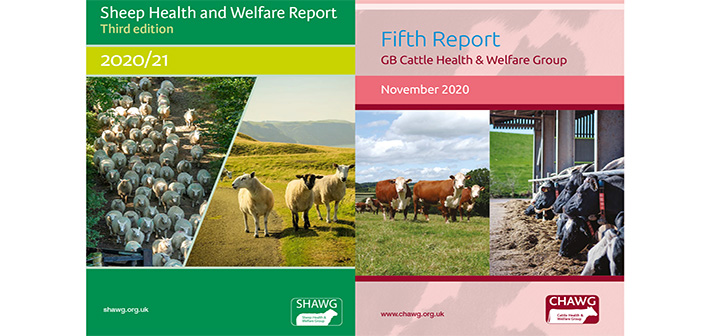The Cattle and UK Sheep Health and Welfare Groups (CHAWG and SHAWG) have launched their final biennial industry reports, highlighting areas of focus to drive forward improvements in the health and welfare of cattle and sheep.
The reports, which signify 10 years of collaboration within industry and government, are wide-ranging, bringing together facts and figures relating to beef and dairy cattle production across GB, and sheep production across the UK.
Topics covered include industry structure and priorities, challenges and opportunities, health performance, disease surveillance and responsible medicine use.
Christine Middlemiss, the UK’s Chief Veterinary Officer, welcomed the reports and said: “We congratulate the groups and all of their participants on providing the bridge between individual farm management and the health and welfare narrative that is so crucial to the future of the industry.
“Collating key data and understanding drivers for behavioural change are vital. The value of the continued work in driving health and welfare improvements, along with environment, performance and cost benefits, has been recognised across the sector.
“We now need to work in partnership across government, industry, science and academia, using a sound evidence base to agree disease control and eradication strategies moving forward.”
The CHAWG report covers industry-led programmes to stamp out BVD and Johne’s Disease, which continue to make big advances following new marketing campaigns and initiatives.
Tim Brigstocke, chair of CHAWG, said: “A quick glance over the past 10 years shows just how much progress the cattle sector has made in monitoring and reporting on relevant issues and then doing something about them.
“As we leave the EU, we can genuinely say Great Britain is in a good place as far as cattle health and welfare is concerned. There is always more to do, but it’s a continuously improving situation.”
The SHAWG report examines progress over six key objectives, including aims to reduce the impact of disease through better use of surveillance, and prioritising nutrition and welfare.
Charles Sercombe, chair of SHAWG, said: “As we enter an era of undoubted change, the sheep industry will be challenged in ways that we can only speculate as to their impact.
“Working towards SHAWG’s vision of a world class sheep industry that is inspired by and competing with the best, this will continue to put us in a position to exploit the opportunities I see coming, whether in new or existing markets. Healthier and more productive sheep will contribute to this.”
The new Ruminant Health and Welfare organisation, which replaces CHAWG and SHAWG, will build on the success/legacy of these two groups and continue to accelerate progress on endemic disease as well as the broader health and welfare challenges.
The final CHAWG and SHAWG reports can be downloaded from www.chawg.org.uk and www.shawg.org.uk.


